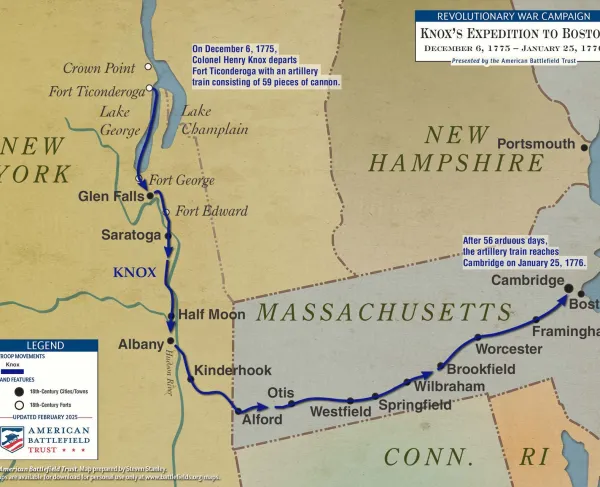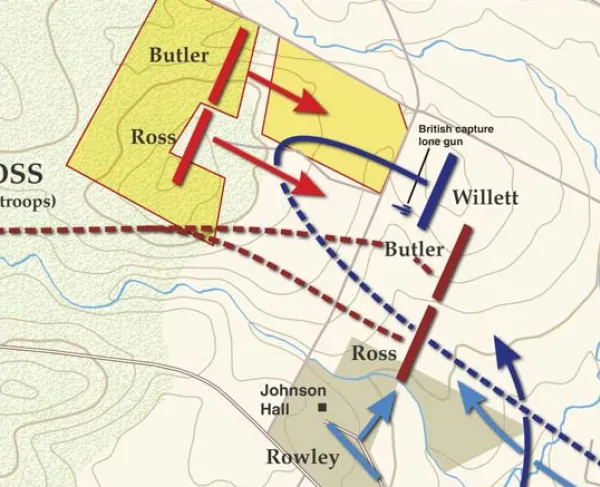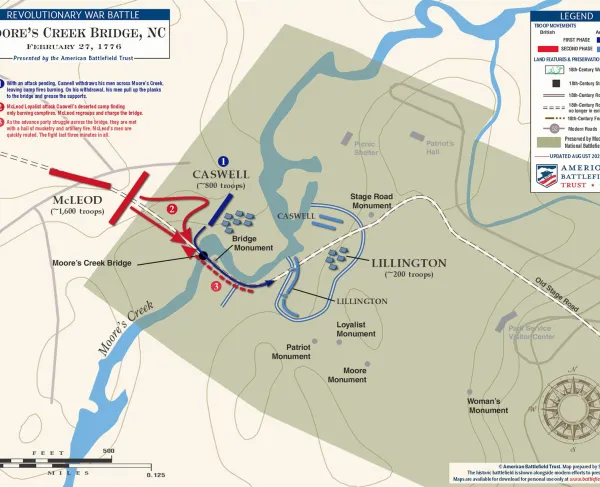Fort Ticonderoga | May 10, 1775
Situated at the confluence of Lake Champlain and Lake George, Fort Ticonderoga controlled access north and south between Albany, New York and Montreal, Canada. In the early days of the American colonies the lakes and rivers of the countryside acted as the highways and byways of the North America. Lake Champlain and Lake George combined to form a superhighway of sorts between New York and Canada. The lakes offered an attacker an avenue of advance, while a defender could fortify strategic points along the waterways.
On May 10, 1775, the American force silently rowed across Lake Champlain from present-day Vermont and captured the fort in a swift, late-night surprise attack. In reality, the fort had fallen into disrepair and the undersized garrison of some 45 British officers and men were taken wholly by surprise. The capture was the first offensive victory for American forces and secured the strategic passageway north and opening the way for the American invasion of Canada later that year. Allen received the lion’s share of the credit for the victory and quickly moved onto capture nearby Crown Point. Between the two installations, the Americans secured seventy-eight cannon, six mortars, three howitzers, eighteen thousand pounds of musket balls, and some thirty thousand flints. The “Gibraltar of North America” gave Gen. George Washington the advantage he needed in fire power to force the capitulation of the British at Boston. Colonel Henry Knox over saw the extraction and delivery of Ticonderoga’s guns to the American siege lines at Boston. Traveling through snow, over frozen rivers and lakes, Knox and his men delivered the guns in 40 days rather than his estimated sixteen or seventeen days. Regardless, this logistical feat lives on in the annals of American military history, and the American’s opened an invasion route into Canada.
Related Battles
1
48





